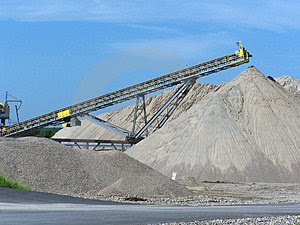Today in the House of Representatives Human Services committee,  I’ll present House Bill 409, a bill to establish a cancer drug donation program.
I’ll present House Bill 409, a bill to establish a cancer drug donation program.
Here is some of my sponsor statement about the bill:
Currently, there is a drug donation program in state law for unused prescription drugs, limited by our laws on dangerous drugs and controlled substances. Section 37-7-1401 MCA now allows for the donation of unused prescription drugs by patients to pharmacies or other dispensers, but our statutes do not allow for the donation of cancer drugs.
Cancer drugs are among the most expensive pharmaceuticals on the market. They do wondrous things: they target cancer cells to kill cancer, new drugs target the interactions between cancer cells and the host, the patient, and cancer drugs help with nausea from chemotherapy to treat cancer. Cancer drugs also include medications to prompt the development of red blood cells, and to help with a patients energy level. But these drugs are expensive, often prohibitively expensive. These therapies are expensive. And a drug is only good if it can be administered. House Bill 409 establishes a cancer drug donation program so that those medications that can be made available from one patient to another are handled responsibly and made available.
The bill sets up the program by which a participating pharmacy can accept, inventory, and dispense donated cancer drugs.
Ive been working on this legislation for more than a year, after hearing from an oncologist in Bozeman and also from a good friend of mine, a nurse at the cancer center, whose cancer patients either had unused medications that had to be flushed down the toilet, hundreds and thousands of dollars in medications, and patients who needed those medications but could not afford them. There is now a terrible disparity between the ability to have the medication, if you can afford it, and having cancer, but not being able to pay for the drugs you need and not having any way to make drugs available, in a controlled method, by those who would give them away.
This is the awful problem that House Bill 409 proposes to address.
I have a letter of support from Dr. Jack Hensold, an oncologist at the Bozeman Cancer Center, and that letter is signed by seven of his colleagues, fellow physicians and nurses. Theyre absolutely supportive of this legislation. They see the need every day. Theyre in Bozeman, at the cancer center, treating patients right now. There is someone right now who needs a medication he or she cannot afford, and Dr. Hensold references that in his letter. In that second paragraph, Dr. Hensold says that, new cancer therapies are, without exception, very expensive, ranging from $3000 to $9000 in monthly costs. Since nearly all the oral chemotherapies are subject to co-pays, all patients, independent of their insurance coverage, are placed at significant financial risk when diagnosed with cancer. In the next sentence, Dr. Hensold says that, within the first month of treatment, [a patient] will be liable for a $5,000 payment for their drug.
Its difficult enough to face a diagnosis of cancer, and ones own illness and mortality. Consider the agony of patients who want to do all they can to fight but do not have all the means-financial or pharmaceutical-to fully fight their diagnosis of cancer.
Imagine the good that a cancer drug donation program will do in making available those very expensive drugs from people who want them not to be wasted, and by people who need but simply cannot afford them.
Now, in the bill, there are some technical points to be made. Ive heard from some pharmaceutical companies that manufacture effective but dangerous drugs for the treatment of cancer, and so well need to amend the bill to include language about some cancer drugs subject to restricted distribution.
This came about in conversations with Celgene Corporation, which manufactures thalidomide for use in cancer treatment. Now, if you remember from the 1960s and early 70s, thalidomide is a drug with the potential to cause severe birth defects. In light of the tragedy that occurred several decades ago, it was considered unthinkable that thalidomide would ever be marketed in the US. Yet, Celgene has developed thalidomide as an effective treatment in leprosy and in a form of blood cancer called multiple myeloma. The Food and Drug Administration has imposed restricted distribution programs for Thalomid and similar drugs based on the determination that, unless access to these drugs and their uses are tightly controlled, they pose a significant threat to the public health, so only physicians, pharmacies, and patients registered with restricted drug distribution protocols are authorized to write, fill, or receive a prescription for those drugs. But its very few, and to accommodate them and to comply with federal law, well amend the bill to address this.
The other consideration is that the bill now is restricted to drugs packaged in a very specific way: that is, single unit dose packaging. Now, its easy to understand how the quality of a drug is controlled when you can see that a blister pack has not been opened.
In the bill, we specify that a cancer drug or device may be accepted or dispensed under the cancer drug repository program if the drug or device is in its original, unopened, sealed, and tamper-evident unit dose packaging.
But many pain medications, anti-nausea drugs, medications for red blood cell development, are dispensed in a prescription bottle. Theyre handled like any drug that you receive now from a pharmacy. And these drugs are expensive, too. My friend the nurse at the Bozeman cancer center told me that a common anti-nausea drug costs $35 a pill, and the prescription is usually 20 or 30 pills, in one bottle, for one patient. Theyre not packaged in blister packs, but theyre handled responsibly by patients and nurses and doctors, and my friend has had to flush $600 worth of pain medication down the drain because theres no program for donating the drugs.
Now, House Bill 409 currently doesnt accommodate leftover medication in opened bottles, but it would be great if it could. Some of the most common and most effective cancer drugs are not available in blister packs, or unit dose packaging. Some liquids drawn into syringes arent viable in unit dose packaging. So if there could be some consideration to include pills in a single bottle, that would be great.
The bill provides for the Board of Pharmacy and the Department of Public Health and Human Services to establish protocols and rules for the program, and I think that could include waivers from patients willing to accept drugs donated from single prescriptions in bottles.
The bill does now provide immunity for people donating, accepting, distributing, and dispensing cancer drugs in the program if all the rules and protocols have been followed.
We also specify that all identifying information must be removed from the container so that the identity of the donating patient is protected.
Other states have established cancer drug donation programs, recognizing the same need and the same wish to help cancer patients. Ref: http://www.ncsl.org/programs/health/rx-reuse.htm
Basically, this is a program to allow those with a need to receive the drugs that others wish to give them.
Its for easing the pain of our loved ones, its for cancer treatment, and nausea control when people are at their lowest, fighting cancer.














